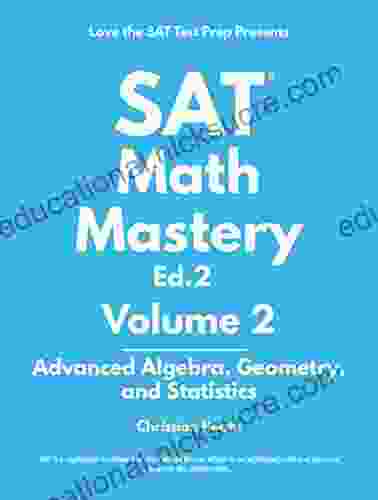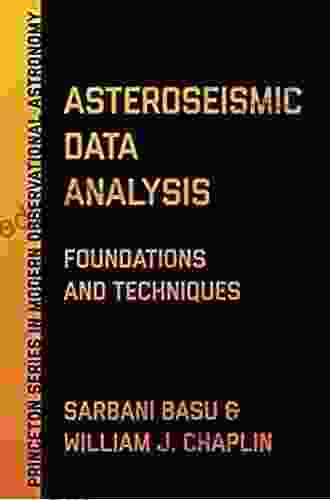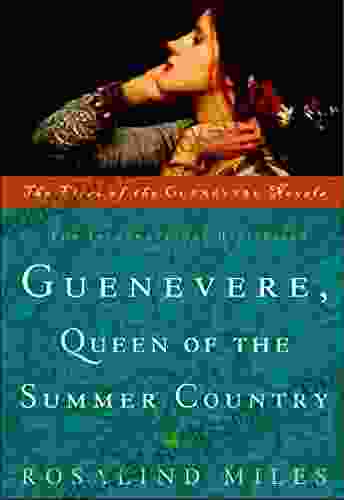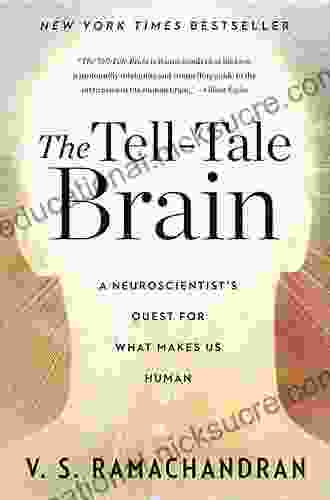Foundations And Techniques Princeton In Modern Observational Astronomy

Modern observational astronomy is a rapidly growing field that has revolutionized our understanding of the universe. New instruments and techniques are allowing us to probe the universe in unprecedented detail, and we are making discoveries that were once thought to be impossible.
5 out of 5
| Language | : | English |
| File size | : | 17764 KB |
| Screen Reader | : | Supported |
| Print length | : | 352 pages |
This article provides a comprehensive overview of the foundations and techniques of modern observational astronomy. We will discuss the basic principles of observational astronomy, the different types of telescopes and instruments used, and the techniques used to analyze astronomical data.
The Basic Principles of Observational Astronomy
Observational astronomy is the study of the universe using electromagnetic radiation. Astronomers use telescopes and other instruments to collect light from celestial objects and analyze it to learn about their properties.
The basic principles of observational astronomy are relatively simple. First, we must collect light from a celestial object. This can be done using a variety of telescopes, each of which has its own advantages and disadvantages.
Once we have collected light from a celestial object, we must analyze it to learn about its properties. This can be done using a variety of techniques, including spectroscopy, photometry, and imaging.
The Different Types of Telescopes and Instruments Used in Modern Observational Astronomy
There are a wide variety of telescopes and instruments used in modern observational astronomy. Each type of telescope has its own advantages and disadvantages, and astronomers must choose the right telescope for the specific task they want to accomplish.
The most common type of telescope is the refracting telescope. Refracting telescopes use lenses to focus light from a celestial object. Lenses can be made from a variety of materials, including glass, plastic, and even water.
Another common type of telescope is the reflecting telescope. Reflecting telescopes use mirrors to focus light from a celestial object. Mirrors can be made from a variety of materials, including glass, metal, and even liquid mercury.
In addition to telescopes, astronomers also use a variety of other instruments to collect light from celestial objects. These instruments include spectrographs, photometers, and imagers.
Spectrographs are used to analyze the spectrum of light from a celestial object. The spectrum of light contains a wealth of information about the object's chemical composition, temperature, and velocity.
Photometers are used to measure the intensity of light from a celestial object. The intensity of light can be used to determine the object's brightness, size, and distance.
Imagers are used to produce images of celestial objects. Images can be used to study the object's shape, size, and surface features.
The Techniques Used to Analyze Astronomical Data
Once astronomers have collected light from a celestial object, they must analyze it to learn about its properties. This can be done using a variety of techniques, including spectroscopy, photometry, and imaging.
Spectroscopy is the study of the spectrum of light from a celestial object. The spectrum of light contains a wealth of information about the object's chemical composition, temperature, and velocity.
Photometry is the measurement of the intensity of light from a celestial object. The intensity of light can be used to determine the object's brightness, size, and distance.
Imaging is the production of images of celestial objects. Images can be used to study the object's shape, size, and surface features.
Modern observational astronomy is a rapidly growing field that has revolutionized our understanding of the universe. New instruments and techniques are allowing us to probe the universe in unprecedented detail, and we are making discoveries that were once thought to be impossible.
The foundations and techniques of modern observational astronomy are essential for understanding the universe around us. By studying the light from celestial objects, we can learn about their properties, their evolution, and their place in the cosmos.
5 out of 5
| Language | : | English |
| File size | : | 17764 KB |
| Screen Reader | : | Supported |
| Print length | : | 352 pages |
Do you want to contribute by writing guest posts on this blog?
Please contact us and send us a resume of previous articles that you have written.
 Fiction
Fiction Non Fiction
Non Fiction Romance
Romance Mystery
Mystery Thriller
Thriller SciFi
SciFi Fantasy
Fantasy Horror
Horror Biography
Biography Selfhelp
Selfhelp Business
Business History
History Classics
Classics Poetry
Poetry Childrens
Childrens Young Adult
Young Adult Educational
Educational Cooking
Cooking Travel
Travel Lifestyle
Lifestyle Spirituality
Spirituality Health
Health Fitness
Fitness Technology
Technology Science
Science Arts
Arts Crafts
Crafts DIY
DIY Gardening
Gardening Petcare
Petcare Monty Roberts
Monty Roberts Touko Amekawa
Touko Amekawa Rosita Boland
Rosita Boland Stacey Lee
Stacey Lee Stanley L Jaki
Stanley L Jaki Gordon Webster
Gordon Webster Nicholas Harvey
Nicholas Harvey Andy Ankowski
Andy Ankowski J K Rowling
J K Rowling Mark Vanhoenacker
Mark Vanhoenacker Teresa Palmer
Teresa Palmer Rachel E Spector
Rachel E Spector Hope Jahren
Hope Jahren Nicholas J Higham
Nicholas J Higham Debbie Felkins Tamez
Debbie Felkins Tamez Carl Hart
Carl Hart Jakob Schwichtenberg
Jakob Schwichtenberg Marissa Meyer
Marissa Meyer Guns Ammo
Guns Ammo Kari Kampakis
Kari Kampakis Rita Jablonski
Rita Jablonski Nigel Calder
Nigel Calder Paul Seabright
Paul Seabright Sharae Moore
Sharae Moore Jonathan Scott
Jonathan Scott Kuldeep Singh
Kuldeep Singh Jennie Lynn Gillham
Jennie Lynn Gillham Ilene And Gary Modica
Ilene And Gary Modica Joey Rive
Joey Rive Rolf Potts
Rolf Potts Andrew Heywood
Andrew Heywood Joseph Bronson
Joseph Bronson Mike Cohn
Mike Cohn Zhongxian Wu
Zhongxian Wu Andrew Thompson
Andrew Thompson Aristeidis Bampakos
Aristeidis Bampakos Kevin Shea
Kevin Shea Becky Albertalli
Becky Albertalli Andrew Warnes
Andrew Warnes Andy Crouch
Andy Crouch Joya Goffney
Joya Goffney Damon B Akins
Damon B Akins Ed Rosenthal
Ed Rosenthal Jason R Rich
Jason R Rich William Gurstelle
William Gurstelle Samara Caughey
Samara Caughey Sol Adoni
Sol Adoni Christine Moore
Christine Moore Mawi Asgedom
Mawi Asgedom Mallory Striesfeld Ms Lpc
Mallory Striesfeld Ms Lpc Tom Chesshyre
Tom Chesshyre H A Lorentz
H A Lorentz Rosicrucian Order Amorc
Rosicrucian Order Amorc Shari Mezrah
Shari Mezrah Thomas F Hornbein
Thomas F Hornbein Nancy Wainer Cohen
Nancy Wainer Cohen Stephanie V W Lucianovic
Stephanie V W Lucianovic Elizabeth Acevedo
Elizabeth Acevedo Seabury Quinn
Seabury Quinn Bob Brier
Bob Brier Howard Thurman
Howard Thurman Christopher Hodapp
Christopher Hodapp N S Wikarski
N S Wikarski Cary Hanson
Cary Hanson Zita Grant
Zita Grant Richard Twiss
Richard Twiss Rachel Lynn Solomon
Rachel Lynn Solomon Chaz Scoggins
Chaz Scoggins Geraldine Woods
Geraldine Woods Peter Compton
Peter Compton Jerry Z Muller
Jerry Z Muller Jamie Christian Desplaces
Jamie Christian Desplaces Laird Scranton
Laird Scranton Gary Todd
Gary Todd Sean Bloomfield
Sean Bloomfield Andrew Hudson
Andrew Hudson Helen O Neil
Helen O Neil Garth Nix
Garth Nix Christopher Dunn
Christopher Dunn Justine Bateman
Justine Bateman Michelle Madow
Michelle Madow Kirk W Johnson
Kirk W Johnson Alexander Bennett
Alexander Bennett Andy Burnham
Andy Burnham Yasuharu Okuda
Yasuharu Okuda Fiona Higgins
Fiona Higgins Rudy Rucker
Rudy Rucker Lauren Kate
Lauren Kate Andrew Zerling
Andrew Zerling Molly E Lee
Molly E Lee Patrick Felicia
Patrick Felicia Robert Holdstock
Robert Holdstock Jenny Randles
Jenny Randles Uma Dinsmore Tuli
Uma Dinsmore Tuli Dan Werb
Dan Werb Dan Allan
Dan Allan Morten Lund
Morten Lund Jonathan Bennett
Jonathan Bennett Rami Ungar
Rami Ungar Jon Gertner
Jon Gertner Peter Kaminsky
Peter Kaminsky Judith A Cohen
Judith A Cohen Charles Darwin
Charles Darwin Des Hewitt
Des Hewitt George Washington Cable
George Washington Cable Lisa Silverman
Lisa Silverman Sam Maggs
Sam Maggs Stephen Prata
Stephen Prata Henry Fielding
Henry Fielding Jen Benson
Jen Benson Madeleine Roux
Madeleine Roux Paul Davies
Paul Davies Marcus Tomlinson
Marcus Tomlinson Kathleen Huggins
Kathleen Huggins Judy Ford
Judy Ford Carolyn Savage
Carolyn Savage Gordon W Green
Gordon W Green Andrew Phillip Smith
Andrew Phillip Smith K L Walther
K L Walther Andrew Robinson
Andrew Robinson Roger Highfield
Roger Highfield Mark Mcclusky
Mark Mcclusky Jim Hardy
Jim Hardy Brian Grossenbacher
Brian Grossenbacher Ronald T Kneusel
Ronald T Kneusel William E Hearn
William E Hearn Daniel W Cunningham
Daniel W Cunningham Glenn Berkenkamp
Glenn Berkenkamp Bronwen Skye
Bronwen Skye Martin Woodward
Martin Woodward Davida Hartman
Davida Hartman David Stipp
David Stipp Michael F Roizen
Michael F Roizen Daniel Mark Brown
Daniel Mark Brown Anthony Bishop Lmft
Anthony Bishop Lmft Luna Fox
Luna Fox Mark Needham
Mark Needham Aaron Edkins
Aaron Edkins Chris Rodell
Chris Rodell Michael Polanyi
Michael Polanyi Timothy Ferris
Timothy Ferris Andrew Stellman
Andrew Stellman K A Linde
K A Linde Donna Tartt
Donna Tartt Janis Abrahms Spring
Janis Abrahms Spring Sally Cook
Sally Cook Michael J Thompson
Michael J Thompson Bill Pennington
Bill Pennington Sharon A Hansen
Sharon A Hansen Andrew Nahum
Andrew Nahum Kevin Anderson
Kevin Anderson Edmund Nequatewa
Edmund Nequatewa Melisenda Edwards
Melisenda Edwards Brian L Silver
Brian L Silver Fourth Edition Kindle Edition
Fourth Edition Kindle Edition Gene Stone
Gene Stone James P Sethna
James P Sethna Delphi Classics
Delphi Classics Sara T Gibbs
Sara T Gibbs Jennifer M Rosner
Jennifer M Rosner Robert M Schoch
Robert M Schoch Erwin Schrodinger
Erwin Schrodinger Ruth E Van Reken
Ruth E Van Reken Bryan Sykes
Bryan Sykes Ruth Haley Barton
Ruth Haley Barton John R Anderson
John R Anderson Ashley Schmitt
Ashley Schmitt Sadie Robertson
Sadie Robertson Peter D Jeans
Peter D Jeans Shannon Van Den Berg
Shannon Van Den Berg Eva Longoria
Eva Longoria Tiffany Harelik
Tiffany Harelik J P Mcevoy
J P Mcevoy Mike Wells
Mike Wells Emily Wibberley
Emily Wibberley Clare Keyes
Clare Keyes Linda Goldberg
Linda Goldberg J D Lenzen
J D Lenzen Jay Sokolovsky
Jay Sokolovsky Dora Kurimay
Dora Kurimay Mark Cannizzaro
Mark Cannizzaro John Lofty Wiseman
John Lofty Wiseman John Helyar
John Helyar Nadia Shammas
Nadia Shammas Eli Maor
Eli Maor Tanya Crossman
Tanya Crossman Stephan Lee
Stephan Lee Thomas Clarkson
Thomas Clarkson Adam Minter
Adam Minter Andrew Lawler
Andrew Lawler William Mark Huey
William Mark Huey Tom Bertrand
Tom Bertrand Loris Chen
Loris Chen Diane Tober
Diane Tober Brock Lesnar
Brock Lesnar Luca Brambilla
Luca Brambilla Cassandra Erkens
Cassandra Erkens Ross Bernstein
Ross Bernstein Carolyn Coker Ross
Carolyn Coker Ross Emilie Bailey
Emilie Bailey Dr John Hockey
Dr John Hockey Frances A Yates
Frances A Yates Dan Orr
Dan Orr Stephen Rea
Stephen Rea Lawrence Dawson
Lawrence Dawson Helene St James
Helene St James Fred Rogers
Fred Rogers Christopher Vaughan
Christopher Vaughan Nina Varela
Nina Varela Ira J Chasnoff
Ira J Chasnoff Beverly Asante Puschmann
Beverly Asante Puschmann C Todd Lombardo
C Todd Lombardo Bruno David
Bruno David Gina M Biegel
Gina M Biegel V S Ramachandran
V S Ramachandran Bridgit Danner Lac
Bridgit Danner Lac Andrew Peterson
Andrew Peterson David Carrasco
David Carrasco Annette K Larsen
Annette K Larsen Ernest Becker
Ernest Becker Nick Jaffe
Nick Jaffe Jordan Ellenberg
Jordan Ellenberg The Car Crash Detective
The Car Crash Detective Sarah Edmondson
Sarah Edmondson Vincent Norman
Vincent Norman Leigh Bernacchi
Leigh Bernacchi Tony Ray
Tony Ray Sadhguru
Sadhguru Sebastian Deterding
Sebastian Deterding Lauren James
Lauren James Michael Epperson
Michael Epperson Antipodean Writer
Antipodean Writer Marsha Walker
Marsha Walker Stan Tekiela
Stan Tekiela Helene Henderson
Helene Henderson Betty Smith
Betty Smith Natalie Babbitt
Natalie Babbitt Reid Sheftall M D
Reid Sheftall M D Dawne Archer
Dawne Archer David Hawkins
David Hawkins Marcos Romero
Marcos Romero Tom Rosenbauer
Tom Rosenbauer Kent Nerburn
Kent Nerburn David Sowell
David Sowell Samuel Hideo Yamashita
Samuel Hideo Yamashita Elianor M A
Elianor M A Stephen Howe
Stephen Howe Daniel Tammet
Daniel Tammet Maggie Stiefvater
Maggie Stiefvater Sian Beilock
Sian Beilock Gila Leiter
Gila Leiter Shonda Rhimes
Shonda Rhimes Akil Palanisamy
Akil Palanisamy Atul K Mehra
Atul K Mehra Caroline Finnerty
Caroline Finnerty Mikael Krief
Mikael Krief Emily Kerr
Emily Kerr Claiborne Young
Claiborne Young Stephen James
Stephen James Carl Petersen
Carl Petersen Rolf Dobelli
Rolf Dobelli Jack David Eller
Jack David Eller Marianne Ryan
Marianne Ryan Howling Moon Books
Howling Moon Books Teresa M Twomey
Teresa M Twomey Ehsan Masood
Ehsan Masood John Atherton
John Atherton Melody Groves
Melody Groves Dustin Howe
Dustin Howe Jason William
Jason William Jim Flynn
Jim Flynn Mona Liza Santos
Mona Liza Santos Briana Wiles
Briana Wiles Harvey Motulsky
Harvey Motulsky Sean B Carroll
Sean B Carroll Seth J Gillihan Phd
Seth J Gillihan Phd Jim Burnett
Jim Burnett Catherine Gildiner
Catherine Gildiner Marian Stamp Dawkins
Marian Stamp Dawkins John Eberhart
John Eberhart Slavka Bodic
Slavka Bodic Bill Dance
Bill Dance Christine Carter
Christine Carter Mark Lester
Mark Lester Shannon Jensen
Shannon Jensen Ginger Scott
Ginger Scott Sarah Digregorio
Sarah Digregorio Jeffro Johnson
Jeffro Johnson Arthur Kleinman
Arthur Kleinman Carson Mccullers
Carson Mccullers Simson L Garfinkel
Simson L Garfinkel Patrick Barrett
Patrick Barrett Lisa Bevere
Lisa Bevere Richard G Klein
Richard G Klein Sarah Pinborough
Sarah Pinborough Brianne Donaldson
Brianne Donaldson Philip Reeve
Philip Reeve Jared Benson
Jared Benson Erin Macpherson
Erin Macpherson Jonathan C Slaght
Jonathan C Slaght Neil Harman
Neil Harman Jon Paschetto
Jon Paschetto Omar D Lewis Sr
Omar D Lewis Sr Rory Stewart
Rory Stewart Andrew Lang
Andrew Lang L Kathleen Mahan
L Kathleen Mahan Ricky Roberts Iii
Ricky Roberts Iii Dan Anderson
Dan Anderson Maggie Ryan
Maggie Ryan Kirk Goldsberry
Kirk Goldsberry Justine Bold
Justine Bold John Sefton
John Sefton Tami Fox
Tami Fox Eric H Cline
Eric H Cline Sheryl Feinstein
Sheryl Feinstein Andrew X Pham
Andrew X Pham Mark Vella
Mark Vella Mary Sheedy Kurcinka
Mary Sheedy Kurcinka Richelle Mead
Richelle Mead Jaimal Yogis
Jaimal Yogis James D Watson
James D Watson Chaim Potok
Chaim Potok Vivien Newman
Vivien Newman Ron Hackett
Ron Hackett Andrew Jamieson
Andrew Jamieson Joy Vines
Joy Vines Jennie Erin Smith
Jennie Erin Smith Andrius Jac
Andrius Jac Richard Bullivant
Richard Bullivant Linda Whitenton
Linda Whitenton Christian Heath
Christian Heath Andrew M Greeley
Andrew M Greeley Pseudo Nym
Pseudo Nym Kay Pranis
Kay Pranis Prosanta Chakrabarty
Prosanta Chakrabarty Carla Hannaford
Carla Hannaford Slow Sprint
Slow Sprint Antonio Pigafetta
Antonio Pigafetta Timothy Gordon
Timothy Gordon Susana Wald
Susana Wald E K Johnston
E K Johnston Christopher O Shaughnessy
Christopher O Shaughnessy Dave Chambers
Dave Chambers M L Ray
M L Ray Jill Squyres Groubert Phd
Jill Squyres Groubert Phd James Berry
James Berry George H Odell
George H Odell Jerry M Gutlon
Jerry M Gutlon Andrew Hempstead
Andrew Hempstead Carla Killough Mcclafferty
Carla Killough Mcclafferty Palle Yourgrau
Palle Yourgrau Jay Arthur
Jay Arthur Robert N Wiedenmann
Robert N Wiedenmann Justin Fox Burks
Justin Fox Burks Charlie Jones
Charlie Jones Miles Smeeton
Miles Smeeton Larry Jacobson
Larry Jacobson Nicholas D Souza
Nicholas D Souza George W Hart
George W Hart William Ma
William Ma David Jefferson
David Jefferson Lucy Atkins
Lucy Atkins Andrew H Knoll
Andrew H Knoll Bruce H Lipton
Bruce H Lipton Gabriel Weinberg
Gabriel Weinberg Jamie Thornton
Jamie Thornton Andrew Reeves
Andrew Reeves Jerusha Clark
Jerusha Clark Lauren Conrad
Lauren Conrad Ruth Bell Graham
Ruth Bell Graham J Richard Hackman
J Richard Hackman Rachel Pepper
Rachel Pepper Sue Fleming
Sue Fleming James R Hansen
James R Hansen Kathrine Switzer
Kathrine Switzer Carl Allchin
Carl Allchin Gordon Churchill
Gordon Churchill Jessie Cal
Jessie Cal W Michael Kelley
W Michael Kelley Connie Goldsmith
Connie Goldsmith Daniel D Fox
Daniel D Fox Dawn Isaac
Dawn Isaac Piero Ferrucci
Piero Ferrucci Rhonda V Magee
Rhonda V Magee Rupert Sheldrake
Rupert Sheldrake Laird Hamilton
Laird Hamilton Donn F Draeger
Donn F Draeger Sam Fels
Sam Fels Sally Bjornsen
Sally Bjornsen Anne Marie Scully
Anne Marie Scully Pawel Guziejko
Pawel Guziejko Kinley Macgregor
Kinley Macgregor Chris Dowhan
Chris Dowhan Lisa Roberts
Lisa Roberts Madeleine L Engle
Madeleine L Engle Fatime Losonci
Fatime Losonci Xan Barksdale
Xan Barksdale Mirabai Starr
Mirabai Starr Shannon Brown
Shannon Brown Sabrina Chevannes
Sabrina Chevannes Andrew Shaw
Andrew Shaw Michaela Deprince
Michaela Deprince Michael J Mauboussin
Michael J Mauboussin Julia Cameron
Julia Cameron William J Broad
William J Broad Lynn Painter
Lynn Painter Chris Mcmullen
Chris Mcmullen P Anastasia
P Anastasia John Macgregor
John Macgregor Behrouz Moemeni
Behrouz Moemeni David A French
David A French T H Lain
T H Lain Kris Holloway
Kris Holloway Margot Kahn
Margot Kahn Master Wong
Master Wong Leslie Klenke
Leslie Klenke Damon Wiseley
Damon Wiseley Nelson L Schuman
Nelson L Schuman Edward C Klatt
Edward C Klatt Steve Lage
Steve Lage John Daido Loori
John Daido Loori Jennifer Lw Fink Rn Bsn
Jennifer Lw Fink Rn Bsn Hp Newquist
Hp Newquist Wendy Bryden
Wendy Bryden Cathy Kelly
Cathy Kelly Portia Macintosh
Portia Macintosh Eddy Starr Ancinas
Eddy Starr Ancinas Suzanne Van Atten
Suzanne Van Atten Ben Foss
Ben Foss Educational Brain Games
Educational Brain Games Dennis J Stanford
Dennis J Stanford Julie Lythcott Haims
Julie Lythcott Haims Liz Prince
Liz Prince Hugh P Mckenna
Hugh P Mckenna Rosalind Miles
Rosalind Miles Stephon Alexander
Stephon Alexander Gordon Wright
Gordon Wright Rhianna Pratchett
Rhianna Pratchett Edgar H Schein
Edgar H Schein Mark Hyman
Mark Hyman Melanie Burnell
Melanie Burnell Christine Pearson Casanave
Christine Pearson Casanave Stephen Cole
Stephen Cole Tim Huffman
Tim Huffman Sarah Castille
Sarah Castille Peggy Orenstein
Peggy Orenstein Dr Sarah Mitchell
Dr Sarah Mitchell Mary H K Choi
Mary H K Choi Michele Amitrani
Michele Amitrani Jessica Speer
Jessica Speer Heidi Dais
Heidi Dais M J Abadie
M J Abadie Walter Martin
Walter Martin Diane R Gehart
Diane R Gehart Laurie David
Laurie David Chelsea Johnson
Chelsea Johnson Tina H Boogren
Tina H Boogren W Somerset Maugham
W Somerset Maugham Rob Eastaway
Rob Eastaway Rainer Martens
Rainer Martens Monica Clyde
Monica Clyde Andrew Hodges
Andrew Hodges Claire Ahn
Claire Ahn Kevin Thomas
Kevin Thomas Angela Berkfield
Angela Berkfield Winifred Gallagher
Winifred Gallagher Vibrant Publishers
Vibrant Publishers Lisa Cron
Lisa Cron Carolyn S Schroeder
Carolyn S Schroeder Charles Cooper
Charles Cooper Robert Parris Moses
Robert Parris Moses John H Carroll
John H Carroll Claire Phillips
Claire Phillips Vanessa A P
Vanessa A P Elizabeth Walter
Elizabeth Walter S G Taylor
S G Taylor Benedict Goleman
Benedict Goleman Nick Estes
Nick Estes Ruta Sepetys
Ruta Sepetys Nancy Frey
Nancy Frey Gladstone Califf
Gladstone Califf Tim Clarkson
Tim Clarkson Guy Windsor
Guy Windsor Robert Kurson
Robert Kurson Tom Doak
Tom Doak Andrew J Wakefield
Andrew J Wakefield Andrew Moore
Andrew Moore Rick Scoppe
Rick Scoppe Elijah N Daniel
Elijah N Daniel Erika V Shearin Karres
Erika V Shearin Karres Texes Exam Secrets Test Prep Team
Texes Exam Secrets Test Prep Team Marie Sherlock
Marie Sherlock Michio Kaku
Michio Kaku John Mcphee
John Mcphee Michael Barela
Michael Barela Xavier P Hunter
Xavier P Hunter Sendhil Mullainathan
Sendhil Mullainathan Andrew Hartman
Andrew Hartman Quick Guide
Quick Guide Bryan Mellonie
Bryan Mellonie Clinton Anderson
Clinton Anderson Tom Holland
Tom Holland
Light bulbAdvertise smarter! Our strategic ad space ensures maximum exposure. Reserve your spot today!
 Lucas ReedFollow ·3.8k
Lucas ReedFollow ·3.8k Julian PowellFollow ·12.8k
Julian PowellFollow ·12.8k Dean CoxFollow ·14.4k
Dean CoxFollow ·14.4k Cormac McCarthyFollow ·19.6k
Cormac McCarthyFollow ·19.6k Rick NelsonFollow ·9.1k
Rick NelsonFollow ·9.1k Max TurnerFollow ·11.7k
Max TurnerFollow ·11.7k Don ColemanFollow ·3.8k
Don ColemanFollow ·3.8k Colby CoxFollow ·9.5k
Colby CoxFollow ·9.5k

 Craig Blair
Craig BlairThe Story of Champion Bronc Rider Bill Smith: A Legacy of...
In the annals of rodeo...

 H.G. Wells
H.G. WellsAmazing Real Life Stories In The News
The news is often...

 Jordan Blair
Jordan Blair35 Wellness Walks to Expand Awareness, Increase Vitality,...
In an era where technology...

 Edward Reed
Edward ReedCycling London to Paris: An Epic Adventure in the Making
Are you ready for the...

 Edgar Hayes
Edgar HayesEveryday Steps For Putting Technology In Its Proper Place
Are you constantly...

 Mitch Foster
Mitch FosterSat Math Mastery Advanced Algebra Geometry And Statistics
SAT Math Mastery Advanced Algebra Geometry...
5 out of 5
| Language | : | English |
| File size | : | 17764 KB |
| Screen Reader | : | Supported |
| Print length | : | 352 pages |












